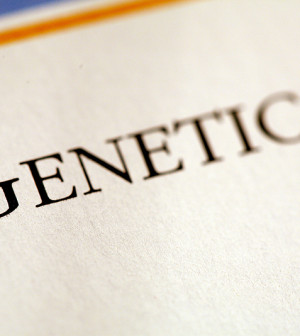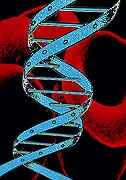- Navigating Your Midlife Crisis: Embracing New Possibilities
- City Raccoons Showing Signs of Domestication
- Mapping the Exposome: Science Broadens Focus to Environmental Disease Triggers
- One Week Less on Social Media Linked to Better Mental Health
- Your Brain Changes in Stages as You Age, Study Finds
- Some Suicide Victims Show No Typical Warning Signs, Study Finds
- ByHeart Formula Faces Lawsuits After Babies Sickened With Botulism
- Switch to Vegan Diet Could Cut Your Greenhouse Gas Emissions in Half
- Regular Bedtime Does Wonders for Blood Pressure
- Dining Alone Could Mean Worse Nutrition for Seniors
Scientists Spot Gene Tied to Severe Autism in Girls


Researchers say they’ve discovered a new genetic cause of autism, singling out a rare gene mutation that appears to hamper normal brain development early on in powerful ways.
The gene, CTNND2, provides instructions for making a protein called delta-catenin, which plays crucial roles in the nervous system, said senior author Aravinda Chakravarti, a professor in the Johns Hopkins University School of Medicine’s Institute of Genetic Medicine.
His research team found that a group of girls with severe autism carried CTNND2 mutations that appeared to reduce the effectiveness of delta-catenin, potentially affecting their neurological development.
“There are many, many proteins that in fact ‘moonlight,’ doing many, many different things,” Chakravarti said. “Maybe the severity of the effect of delta-catenin comes from the fact that when you lose function of this protein, you lose not just one function but many functions. Although that remains to be shown, it is strongly implicated by our study.”
Autism spectrum disorder is a neurological and developmental disorder that begins early in life. The cause is not known, although scientists suspect genes play a role.
The researchers discovered the CTNND2 gene’s link to autism using an approach that focuses on rare and extreme cases of autism, according to the study released online March 25 in the journal Nature.
By focusing on extreme cases, they believe they will discover genes that have a more powerful effect on brain development and help explain the root causes of autism.
“If we study rare and extreme forms, they are both genetic and they represent very early neurodevelopmental events,” Chakravarti said.
The researchers chose to study girls with autism because they are far less likely to have autism than boys. When girls do develop the disorder, their symptoms tend to be severe.
The genetics of 13 girls with autism were sequenced, and then compared to genes carried by people who did not have autism who were listed in a public database. The investigators detected four potential culprit genes for autism, including CTNND2.
The researchers zeroed in on CTNND2 because it has been linked to another developmental disorder called cri-du-chat syndrome, Chakravarti said.
Many people with cri-du-chat syndrome lack a copy of the CTNND2 gene in each cell, and this appears to cause severe intellectual disability, according to the U.S. National Institutes of Health (NIH).
The delta-catenin created from the CTNND2 genetic blueprint is active in the nervous system, the NIH says. It’s thought that delta-catenin might help guide nerve cells to their proper positions in the developing brain, as part of a process called neuronal migration.
Children with mutations of the CTNND2 gene may end up with intellectual disorders like cri-du-chat because their genetic defect hampers proper neuronal migration during the early development of the nervous system, the NIH indicates.
This new study also implicates CTNND2 mutations in autism, by looking at the gene’s effects in zebrafish embryos and in human brains taken from fetal and adult cadavers.
Researchers found they could affect the development of neural synapses in zebrafish by introducing a genetic defect that reduced the amount of delta-catenin protein in the fish, Chakravarti said.
In addition, autopsies conducted by the research team found far higher levels of delta-catenin in fetal brains than in adult brains, implying that the protein likely plays a key role in brain development, he said.
Dr. Paul Wang, head of medical research for Autism Speaks, said that the CTNND2 gene highlighted by the new study “makes a lot of sense.”
“It’s involved in brain development. It’s involved in maintaining the connection between neurons in the brain. And it interacts with other genes that are also known to be risk factors for autism,” Wang said.
Because women are more resistant to autism, any genetic cause for their condition likely is more important and could have an earlier and more significant impact for all people with autism, both men and women, Wang said.
“This new paper confirms that brain development and the connection between neurons is a critical function that does seem to go wrong in people with autism,” Wang said. “Knowing this particular gene could give us more targets to try to correct the communication between neurons.”
Chakravarti’s research group is now working to find the functions of the other three genes identified as possibly associated with autism.
More information
For more on the CTNND2 gene, visit the U.S. National Institutes of Health.
Source: HealthDay
Copyright © 2025 HealthDay. All rights reserved.










